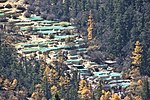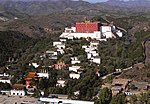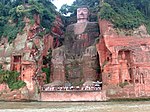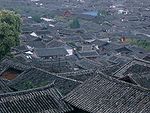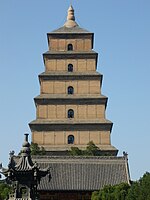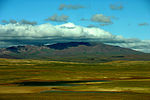
Shaolin Monastery, also known as Shaolin Temple, is a monastic institution recognized as the birthplace of Chan Buddhism and the cradle of Shaolin Kung Fu. It is located at the foot of Wuru Peak of the Songshan mountain range in Dengfeng County, Henan Province, China. The name reflects its location in the ancient grove of Mount Shaoshi, in the hinterland of the Songshan mountains. Mount Song occupied a prominent position among Chinese sacred mountains as early as the 1st century BC, when it was proclaimed one of the Five Holy Peaks. It is located some 48 km (30 mi) southeast of Luoyang, the former capital of the Northern Wei Dynasty (386–534), and 72 km (45 mi) southwest of Zhengzhou, the modern capital of Henan Province.

Lijiang, formerly romanized as Likiang, is a prefecture-level city in the northwest of Yunnan Province, China. It has an area of 21,219 square kilometres (8,193 sq mi) and had a population of 1,253,878 at the 2020 census whom 288,787 lived in the built-up area (metro) made of Gucheng District. Lijiang is famous for its UNESCO Heritage Site, the Old Town of Lijiang, which contains a mixture of different historical architecture styles and a complex, ancient water-supply system.

Purple Mountain or Zijin Shan is located on the eastern side of Nanjing in Jiangsu province, China. It is 448.2 metres (1,470 ft) high. Its peaks are often found enveloped in purple and golden clouds at dawn and dusk, hence its name.

The Wuyi Mountains or Wuyishan are a mountain range located in the prefecture of Nanping, in northern Fujian province near the border with Jiangxi province, China. The highest peak in the area is Mount Huanggang at 2,158 metres (7,080 ft) on the border of Fujian and Jiangxi, making it the highest point of both provinces; the lowest altitudes are around 200 metres (660 ft). Many oolong and black teas are produced in the Wuyi Mountains, including Da Hong Pao and lapsang souchong, and are sold as Wuyi tea. The mountain range is known worldwide for its status as a refugium for several rare and endemic plant species, its dramatic river valleys, and the abundance of important temples and archeological sites in the region, and is a UNESCO World Heritage Site.

Sanming, also known as Minzhong, is a prefecture-level city in western Fujian province, China. It borders Nanping City to the north, Fuzhou City to the east, Quanzhou City to the southeast, Longyan City to the south and the province of Jiangxi to the west. Sanming lies between Wuyi and Daiyun mountains.
Imperial Tombs of the Ming and Qing Dynasties is the designation under which the UNESCO has included several tombs and burial complexes in the list of World Heritage Sites. These tombs date from the Ming and Qing dynasties of China.

Mount Jiuhua located in Chizhou, Anhui Province in China is an important Buddhist site and natural scenic spot. It is one of the four famous Buddhist mountains in China, one of the first batch of 5A level scenic spots in China, one of the first batch of natural and cultural heritage sites in China, and the main scenic spot of "two mountains and one lake" tourism development strategy in Anhui Province. The planned area of the scenic spot is 120 square kilometers, and the protected area is 174 square kilometers, which is composed of 11 scenic spots.

Zhangjiajie National Forest Park is a national forest park located in Zhangjiajie, Hunan Province, China. It is one of several national parks within the Wulingyuan Scenic Area.

The Wuling Mountains are a mountain range located in Central China, running from Chongqing Municipality and East Guizhou to West Hunan. They are home to many ethnic groups, including as the Tujia, Han, Miao, Dong, and Bai.
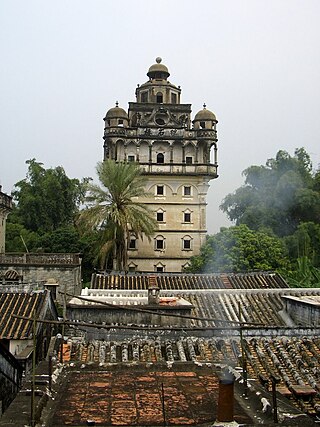
Diaolou are fortified multi-storey watchtowers in rural villages, generally made of reinforced concrete. These towers are located mainly in the Kaiping (开平)City in Guangdong province, China. In 2007, UNESCO designated the Kaiping Diaolou and Villages (开平碉楼与村落) a World Heritage Site, which covers four separate Kaiping village areas: Sanmenli (三门里), Zilicun (自力村), Jinjiangli (锦江里), and Majianglong village cluster (马降龙村落群). These areas demonstrate a unique fusion of 19th and 20th-century Chinese and Western architectural styles.
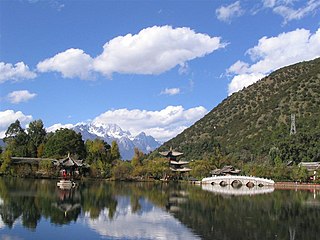
Black Dragon Pool is a famous pond in the scenic Jade Spring Park located at the foot of Elephant Hill, a short walk north of the Old Town of Lijiang in Yunnan province, China. It was built in 1737 during the Qing dynasty and offers views of the region's tallest mountain, Jade Dragon Snow Mountain, over its white marble bridge.

The Three Parallel Rivers of Yunnan Protected Areas is a UNESCO World Heritage Site in Yunnan province, China. It lies within the drainage basins of the upper reaches of the Jinsha (Yangtze), Lancang (Mekong) and Nujiang (Salween) rivers, in the Yunnan section of the Hengduan Mountains.

Dayan, commonly called the Old Town of Lijiang is the historical center of Lijiang City, in Yunnan, China. It is a UNESCO World Heritage Site.

Ancient and Primeval Beech Forests of the Carpathians and Other Regions of Europe is a transnational serial nature UNESCO World Heritage Site, encompassing 93 component parts in 18 European countries. Together, the sites protect the largest and least disturbed forests dominated by the beech tree. In many of these stands, these forests here were allowed to proceed without interruption or interference since the last ice age. These sites document the undisturbed postglacial repopulation of the species.

The Fuling or Fu Mausoleum, also known as the East Mausoleum, is the mausoleum of Nurhaci, the founding monarch of the Later Jin dynasty and his wife, Empress Xiaocigao. It served as the main site for ritual ceremonies conducted by the imperial family during the entire Qing dynasty. Located in the eastern part of Shenyang city, Liaoning Province, northeastern China, Fuling has been a UNESCO World Heritage Site since 2004.
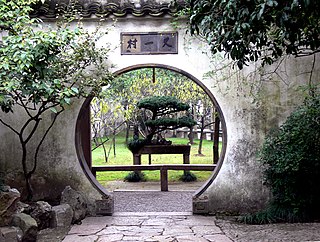
The Classical Gardens of Suzhou are a group of gardens in the city of Suzhou, in Jiangsu, China, which have been added to the UNESCO World Heritage List.
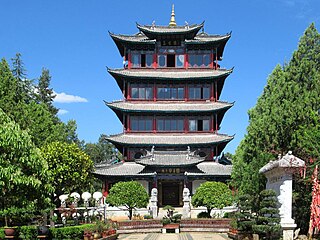
Wangu Pavilion is located on Lion Hill, within the Old Town of Lijiang district, Yunnan, China. The wooden pavilion was reconstructed in 1997 as part of the Lijiang areas' declaration as a UNESCO World Heritage Site. Wangu Pavilion means 'the pavilion of everlasting clarity'.
AAAAA (5A) is awarded to the most important and best-maintained tourist attractions in the People's Republic of China, given the highest level in the rating categories used by the Ministry of Culture and Tourism. As of 2020, there are 279 tourist attractions listed as 5A.
The Miaojiang Great Wall is a series of fortifications in Southern China. It is located in the present-day Xiangxi Autonomous Region of Tujia and Miao in the western province of Hunan, China. It is a 190-kilometre (120-mile) wall, the largest part of which is in Fenghuang County. It was built in 1554 during the Ming Dynasty to protect against the minorities in Southern China and was completed in 1662. The wall is 3 metres high and 2 metres wide.












